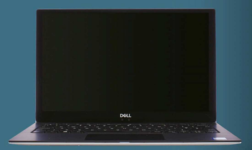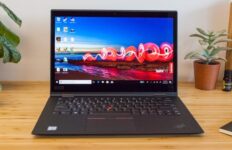It’s time to decide which of these super-thin powerhouses is worthy
by Led Wayline
Ultrabooks, AKA ultra-portables, ultra-thin, and super-slim. These are the terms that premium notebooks now use to describe themselves. Are they appropriate? Going by design alone, yes. As for performance and the user experience – both complement the unique description to-a-tee. After all, what good is premium material without the equally as power-pack performance and immersive user experience?
That is what the PC.com Showdown for this month is focusing on – the looks and handling of these premium notebooks. While there are plenty of brands and their respective systems to cnbuse from, only three have been keen to take up the call. They are HP, Lenovo, and Dell. All three, of course, respectively put in their very best – the HP Spectre 13, Lenovo-ThinkPad X1-YOGA, and Dell XPS 13. Other brands that have been summoned include ASUS and Acer. Unfortunately, both bow out from competing. It’s really not a matter of specs as the devices will be on par – an Intel 8th Generation Core is necessary with LPDDR3 RAM, SSD storage, and Intel UHD Graphics 620. The bigger focus is on the features these ultrabooks have to off
Table of Contents
- Dell XPS 13 9370 Review – Classy Work Machine
- HP Spectre 13 (2018) Review – Performance Refined
- Lenovo ThinkPad X1 YOGA Review – Heritage Fallback
- SHOWDOWN – Comparison Chart
- Dell XPS 13 9370 Linux Review
- Lenovo ThinkPad X1 Yoga Review: Perfect Business Partner
- HP Spectre 13 (2018) Review: White magic
- Results
Dell XPS 13 9370 Review – Classy Work Machine
The Dell XPS 13 9370 is a 2018 revamp of the ever-popular Dell XPS 13 ultra-portable notebook. This refresh brings with it better and newer specs, some design changes, and a new colour too. All in all, these updates propel the device as a stand-out in the premium portable PC category. The latest colour-way adds an extra touch of class for this next-gen entry, taking the high-grade characteristics of the Dell XPS to even greater heights.
The Looks
The near bezel-less screen for this year’s entry is not just more of the same as Dell amps up the overall look and feel of the new Dell XPS 13. The tweaks, while minor at most, is enough to really make this updated panel stand out and look jaw-droppingly good. This is without going into the performance yet – it’s that good looking.
As for the design, going with an Alpine White design, which is intricately woven into the glass, breaks the proverbial ceiling limit for creative design. No, it doesn’t have to be glass. The colour choice is applied throughout the chassis and then some. The only features not in this shade of purity are the gold accented colour-ways.
The Experience
As a daily driver, this all-new Dell XPS 13 ultra-portable for work purposes, it is more than capable at performing its job. From boot up to loading Microsoft Windows 10 and running various apps, everything feels snappy. This is all thanks to the Intel 8th Generation Core CPU and LPDDR3 RAM. The pair and the other extras Dell has put in to optimise the performance ensures a solid delivery. Indeed, the user experience is not compromised at any level.
For an ultra-portable, one main concern most are prone to bring up is the heating management. Often times, Ultrabooks – when they are under heavy loads – have the tendency to become a super-heated platform. This is due to the bad cooling capabilities of these super-sleek systems. This isn’t the case with the 2018 take on Dell XPS 13 as it doesn’t heat up as much. In fact, it’s cooler than its immediate predecessors.
In terms of productivity, the new Dell XPS 13 2018 is more than able to crush word processing, crunch numbers on spreadsheets, and roll with truckloads of tabs on Google Chrome. Even running enriched multimedia, like 4K, 4K HDR, and some mid-level game graphics, are a cinch. Keep in mind about the latter as gaming may be a stretch, specifically with high-end visuals. After all, this next-gen Dell lacks a discrete GPU. Battery life is awesome too – a good 6- to 8-hours of work and play on a full charge.
HP Spectre 13 (2018) Review – Performance Refined
Having the title, at one time, of being the thinnest ultra-portable can produce wonders to a brand. The expectations are higher, the demand for quality and innovation are equally as crazy. That is what the original HP Spectre 13 achieves and is leveraging off right now. How much more can one improve from the original? A lot apparently, especially since this is purely from HP. Beyond updating the innards, HP has also put in a couple of minor improvements.
The Looks
Has HP manage to make its flagship ultra-portable even thinner? Can it risk the compromises that one must make to achieve that ultra-slim and super svelte look? While HP hasn’t deliver to that degree in terms of design change, it did put in some pretty sweet tweaks.
First, the hinge design. While looking no different from the immediate predecessor, the hinge looks and feels more robust now. It could be the internal changes or a small update to the swing mechanics – either way, the top-lid opens more smoothly. This makes for better handling and the operational experience more seamless. Second, HP has also introduced a Ceramic White option. This is for the ones who must stand-out and be different from the mainstream crowd. The second colour option ensures that no one is left out from getting a high-spec workhorse.
The Experience
Having an Ultrabook that does more than deliver on the workflow is a must these days. That is the specific segment the HP entrant is focusing on since its first iteration. With the next- gen variation, it’s more of the same and then some. For the next-gen entry, this compact powerhouse packs in high-end multimedia capabilities and it shows thanks to the optimised speaker system. When that is paired with the true 4K performance of this new HP entry offers, the immersive delivery is unmatched. Everything looks rich on the HP Spectre 13 (2018) – from games to movies and whatever is on Netflix, all look sharp, crispy, and vivid. Even long hours of work is fine on this system as typing out articles feel like a real breeze on the soft-touch keyboard.
All in all, the HP Spectre 13 (2018) has achieved a nice balance in terms of design and performance – that perfect mix of form and function. It helps the battery lasts long enough for a full-day of work. Stylishly powerful is what HP is going after and it delivers on all fronts with the next-gen premium ultra-portable.
Lenovo ThinkPad X1 YOGA Review – Heritage Fallback
Lenovo always has close association with being the wild card of the bunch. From its efforts in the Ultrabook and 2-in-1 segments, to its crazy acquisitions of US-based brands. Even for this month’s PC.com Showdown among ultra-compact premium notebooks, the entry from Lenovo is a special case. Indeed, the Lenovo ThinkPad X1 YOGA – the 2018 take – is not just any convertible Ultrabook.
The Looks
Its classification and market-focus alone are indicators on who it is targeting. Hence, the 2-in-1 platform is playing two cards for this face-off: it’s a convertible and it is especially built for productivity. Of course, the latter aspect has other things playing it up. Before going into that, let’s go over the design elements.
For a 2-in-1 that packs in the very best in specs, it is not surprising that the Lenovo ThinkPad X1 YOGA sports a thicker chassis. The larger form factor is to accommodate for the Corning Gorilla Glass protection of the touchpanel and the powered innards that sit in the keyboard panel. This also reflects the heritage that the ThinkPad is famous for – being sturdy, tough, and versatile. Does it justify the somewhat blocky look of the device? Yes, yes it does!
The Experience
Now, it is easy to go on and on about the Lenovo ThinkPad X1 YOGA. The heritage it falls back on is very rich and everything about this next-gen entry screams homage. From the awesome key travel to the digital functions it offers, the latter being aspects the other competitors offer as well, the entire experience is surreal in a positive way. Even the FN and Control keys switch-around is not an issue.
Starting up the system and running all sorts of work processes are all done within seconds. Even without a dedicated graphics, running 4K content and working on Full HD renders are non-issues. Loading up games, mostly touch-screen types, are easy enough and do not cause any system faults to appear. Engaging rich digital content in tablet format is cool too and it’s very hard to get back to the traditional PC look.
In terms of battery life, the Lenovo ThinkPad X1 YOGA can run close to 10 hours non-stop. The caveat: it must be just word processing and minimal social media browsing. No videos, no music, and no distractions. It helps the no-nonsense design also acts as an encouragement factor to get work done. This is where practical business looks trumps stylish chic.
SHOWDOWN – Comparison Chart
Results
The prime choice between the three is a very hard call. Of the trio, two come in exceptionally outstanding white hues. One of these classier entries is focused on multimedia delivery. The non-white entry is a 2-in-1 and rocks a stylus to boot. This is why the two comparison aspects for this month’s PC.com Showdown fall to how they look and perform. Even then, it’s a close fight.
Going by just the two criteria alone, the winner for this finding the greatest premium ultra-portable notebook is none other than:
Lenovo ThinkPad X1 YOGA
Its business features, extra peripheral, and 2-in-1 function aside, as a straight up notebook that exudes premium quality, nothing beats true business looks and function. If it comes in white, even better! Since this Showdown is produced on all three devices, there is ample time to evaluate and determine which is the best amongst these entries. In short, Lenovo got all the checkboxes right.


